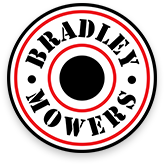If you have been digging in the dirt of your yard lately, you might have come across little curled critters that look like juicy macaroni. These are grubs, and they are the larval stage of different types of beetles. Their sole purpose is to eat, and they will eat through your grass, flowers and other ornamental plantings at the root and stem level. They can cause your lawn to turn brown and die, allowing weeds to take the place of the grass. Here are some tips on how to get rid of the grubs in your lawn.
Use Parasitic Nematodes
Parasitic nematodes are microscopic organisms. They are alive, so you need to carefully time your purchase so that you can apply them to your lawn without delay. They are ideal for heavy grub infestations. A heavy grub infestation is more than 10 grubs per square foot of your lawn. The nematodes will not hurt the grass or any other insects that live in your soil.
Let Them Dehydrate
One way to get rid of grubs without doing much work is by letting them dehydrate. Stop watering your lawn. They need moisture and new plant growth. Although stopping watering might make your grass turn brown for a few weeks, it will get rid of the grub population. Try to do this during a period of naturally dry weather. The hot days of late summer are a good time to let your lawn naturally dry out and allow the grubs to dehydrate and die.
Use Targeted Natural Pesticides
Pyrethrins are a natural pesticide that comes from the chrysanthemum plant. This works best on the adult stage of the beetle. If most of the grubs are in the larval stage, which is in spring to early summer, consider using milky spore. This is a type of bacteria. It is highly effective at getting rid of the Japanese beetle grubs. An advantage of milky spore is that it is effective for an astounding 15 to 20 years, according to Essential Home and Garden. It will not harm the helpful bugs such as ladybugs or bumblebees.
Try Commercial Grub Killers or General Pesticides
If you have tried these natural techniques for reducing the population of grubs in your lawn but you have not achieved the results you had hoped, you might consider commercial grub killers. Some of these are targeted pesticides. Some general pesticides will also work on grubs. The grub killers specifically target the larval stage. The insecticides usually target the adult beetle stage. You will need to know the stage of the majority of the pests in your lawn in order to know if you should get a grub killer or an insecticide. Keep in mind that no single product will get rid of every grub in your lawn, and some pesticides could cause harm to beneficial insects as well as other critters such as earthworms.
